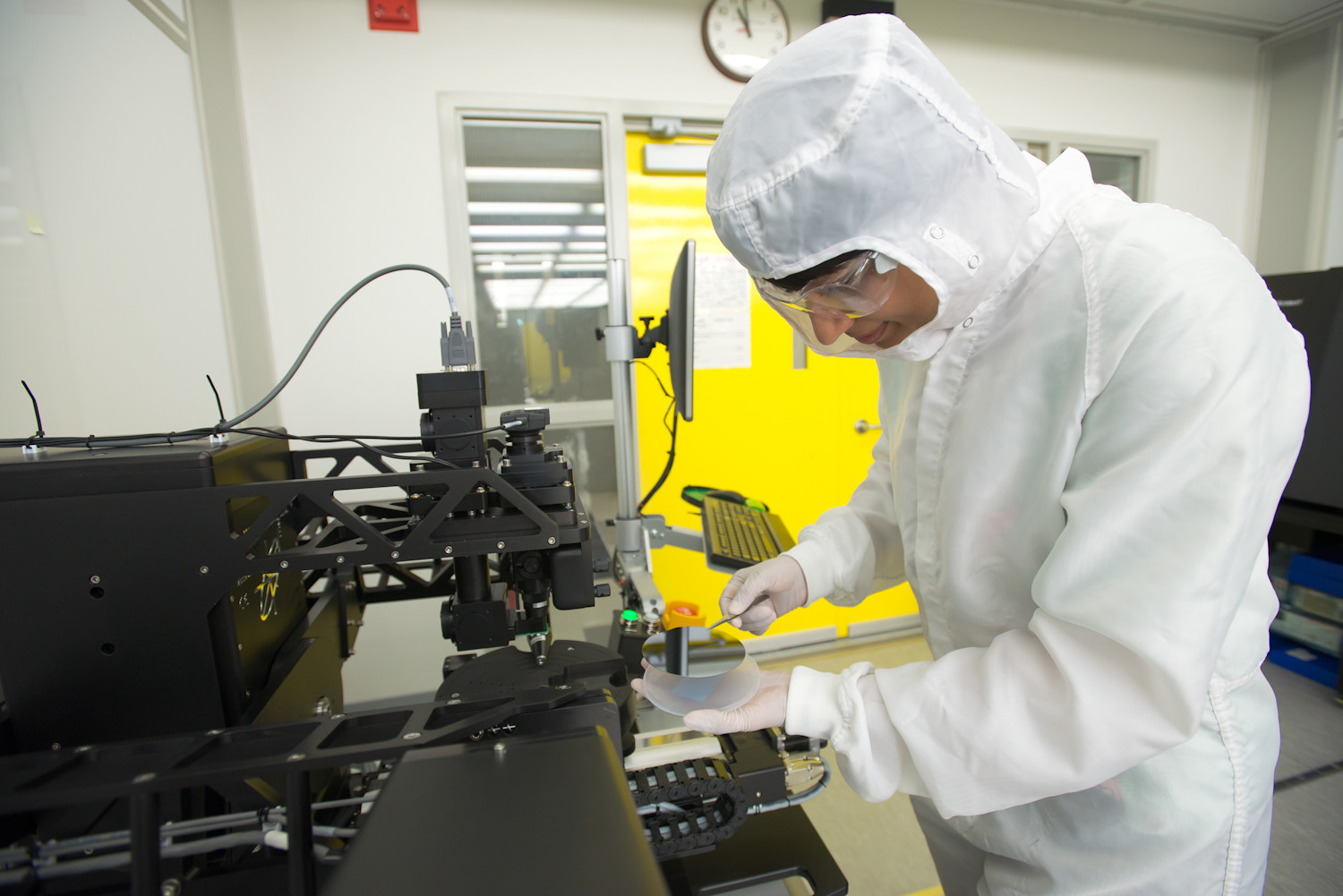What’s in the Commerce Department’s Recent Export Controls on Technology Bound for China?
The Commerce Department’s Oct. 7 export controls aim to restrict China’s access to advanced semiconductors, supercomputers, and semiconductor manufacturing equipment to prevent the Chinese government from using these items for weapons of mass destruction, military modernization, and surveillance.

Published by The Lawfare Institute
in Cooperation With

On Oct.7, the Department of Commerce’s Bureau of Industry and Security (BIS) announced a new slate of export controls designed to restrict the People’s Republic of China’s (PRC’s) access to advanced semiconductors, supercomputers, and semiconductor manufacturing equipment.
This new filing, experts observe, is the most recent step in a years-long evolution of U.S. export controls policy on technology vis-a-vis China. It follows high-profile actions during previous U.S. administrations against companies like ZTE, Huawei, and SMIC. The filing also comes on the heels of an important speech in September by National Security Adviser Jake Sullivan. In it, he articulated a new U.S. approach to technology export controls:
On export controls, we have to revisit the longstanding premise of maintaining “relative” advantages over competitors in certain key technologies. We previously maintained a “sliding scale” approach that said we need to stay only a couple of generations ahead.
That is not the strategic environment we are in today.
Given the foundational nature of certain technologies, such as advanced logic and memory chips, we must maintain as large of a lead as possible.
In general, the new interim final rule does three things. First, it imposes new controls targeting chips above certain performance thresholds, computer commodities containing those chips, and so-called supercomputers. Second, it imposes new controls targeting the items used to manufacture those chips and on end-user controls that govern the activity of U.S. persons potentially supporting the development of chips destined for military use. Third, it establishes measures to minimize the short-term effects of the first two on supply chains.
What follows is an effort to distill the rule and present its most significant changes in clear language over four parts.
Legal Authority and Strategic Rationale
U.S. export control policy is the purview of several executive branch agencies, including the Departments of Commerce, State, Treasury, Homeland Security, Justice, and Defense. Their authority stems from a range of laws, beginning with the Export Administration Act of 1979.
The new rule draws authority primarily from the Export Control Reform Act (ECRA) of 2018. Through the ECRA, Congress charged the executive branch with using export controls in support of several U.S. foreign and national security policy objectives, including to control items that might be used for weapons of mass destruction proliferation, terrorism, or other ends; to preserve the qualitative military superiority of the United States; to protect human rights; and to preserve U.S. leadership in science and technology, among others.
The strategic logic of BIS’s Oct. 7 filing reflects these concerns and the approach outlined in Sullivan’s speech. In short, advanced semiconductors and commodities that contain those chips, as well as so-called supercomputers, are fueling the PRC’s military modernization and enabling surveillance that violates human rights.
On military modernization, BIS argues that these technologies enable the PRC to develop advanced artificial intelligence (AI) applications that can in turn be used to:
improve the speed and accuracy of its military decisionmaking, planning, and logistic, as well as its autonomous military systems, such as those used for cognitive electronic warfare, radar, signals intelligence, and jamming. Furthermore these advanced computing items and “supercomputers” are being used by the PRC to improve calculations in weapons design and testing including for WMD, such as nuclear weapons, hypersonics and other advanced missile systems, and to analyze battlefield effects.
On surveillance, BIS argues that AI tools “are being used by the PRC without regard for basic human rights to monitor, track, and surveil citizens, among other purposes.”
Given these risks, BIS writes, the Oct. 7 controls:
[seek] to protect U.S. national security and foreign policy interests by restricting the PRC’s access to advanced computing for its military modernization, including nuclear weapons development, facilitation of advanced intelligence collection and analysis, and for surveillance. BIS intends to impose controls on items subject to the [Export Administration Regulations (EAR)] and U.S. person activities to limit the PRC’s ability to obtain advanced computing chips or further develop AI and “supercomputer” capabilities for uses that are contrary to U.S national security and foreign policy interests.
To supplement these controls, BIS’s Oct.7 rule also imposes export controls on certain items used to manufacture semiconductors, and connects these items to the same risks. While semiconductor manufacturing equipment holds “great commercial promise in areas such as communications, healthcare, and transportation,” BIS states, it can also be used to “produce various [integrated circuits] for [weapons of mass destruction] or other military applications, as well as applications that enable human rights violations or abuses.”
The new controls also seek to address ways in which China’s military-civil fusion policies have confounded existing export controls. In its filing, BIS writes that “China’s military-civil fusion policies make it more difficult to tell which items are made for restricted end uses, thereby diminishing the effect of [existing controls under the ECRA],” which generally apply “when a U.S. person has knowledge that their activities are contributing to prohibited end uses or end users.”
Controls on Advanced Computing Integrated Circuits, Supercomputers
Commerce Control List Additions and New Regional Stability Basis for Control
The Oct. 7 controls begin by adding certain high-performance integrated circuits (also referred to as ICs or semiconductors) and computers containing those semiconductors to the Commerce Control List (CCL). The CCL is part of the Export Administration Regulations (EAR) and governs the export of U.S.-origin dual-use items such as nuclear materials, electronics, and aerospace equipment. Through the CCL, BIS assigns items an Export Control Classification Number (ECCN) and indicates which reasons for controls apply to each item.
The Oct. 7 filing creates the following new ECCNs:
- 3A090: Integrated circuits including various chip architectures—such as graphical processing units, tensor processing units, and application-specific integrated circuits—above specific performance thresholds.
- 3B090: Semiconductor manufacturing equipment and “specially designed” “parts,” “components,” and “accessories” for semiconductor manufacturing.
- 4A090: Computers, “electronic assemblies,” and “components” containing integrated circuits, any of which exceeds the limit in 3A090.
Additionally, BIS adds to the CCL technology and software associated with the “development” or “production” of the controlled semiconductors and computers (ECCN 3D001, 3E001, 4D090). For the purposes of this summary, we will refer to these as “associated advanced computing items.”
To restrict the sale and movement of these items after listing them, BIS must specify a basis for control from a list, which can be found in 15 CFR § 742. The Oct. 7 filing creates a new reason for control within the existing regional stability (RS) category. The new reason, 15 CFR § 742(a)(6), applies specifically to the PRC and advanced computing items. It imposes a license requirement for exports, reexports, or transfers (within-country) to or within China of the advanced chips, computers containing them, and associated advanced computing items
The new RS control also imposes a license requirement for exporting from China some of the associated advanced computing items. This provision relies on the Foreign Direct Product Rule—which is described in detail below—and applies to “technology for the design, development, or production” of advanced chips that satisfies three conditions: The technology is developed by a PRC-headquartered entity, is the “direct product” of certain software subject to the EAR, and is for the production of certain advanced computing integrated circuits and computers or assemblies containing them.
BIS reiterates that it is implementing these license requirements due to the inherent risk of chips designed by PRC entities being diverted for use in the PRC to support the country’s military modernization.
It also notes that “most license applications under this RS control will be reviewed under presumption of denial.” The exceptions to this policy are applications for semiconductor manufacturing items that are destined to end users who are located in China but headquartered in the U.S. or other select countries. These applications will be reviewed on a case-by-case basis.
Two New Foreign Direct Product Rules
The Oct. 7 filing goes on to expand the scope of U.S. export controls over certain foreign-produced advanced computing items and supercomputer end-uses. It achieves this by making changes to the Foreign Direct Product (FDP) rules. The FDP rules are part of the EAR and extend U.S. export controls to cover certain “foreign-produced items” located outside the United States, even if they have no physical U.S.-origin content, so long as they were made with controlled technology. Each FDP rule includes a “product scope” and a “destination scope” or “end use-scope.” Items fall within the product scope of an FDP rule if they are either the “direct product” of technology or software subject to the EAR (often specified by several ECCNs) or produced from plants, or major components of plants, that are the direct product of controlled technology and software. The destination or end-use scope varies between FDP rules.
BIS’s Oct. 7 filing creates two new FDP rules. First, it creates 15 CFR § 734.9(h) to govern certain advanced computing commodities that meet the rule’s product scope—which includes technology under several listed ECCNs—and are either destined for the PRC or destined to be used in technology developed by PRC-headquartered entities for producing semiconductors (for example, a mask, an IC wafer, or a die).
Second, BIS creates an FDP rule for “supercomputers”: 15 CFR § 734.9(i). The Oct. 7 filing defines a supercomputer as:
a computing system having a collective maximum theoretical compute capacity of 100 or more double-precision (64-bit) petaflops or 200 or more single-precision (32-bit) petaflops within a 41,600-cubic-foot or smaller envelope.
The items specified in the product scope are controlled if there is knowledge that the foreign-produced item will be used for the production or maintenance of supercomputers or incorporated into components for supercomputers located in the PRC.
New End-Use and End-User Control on Supercomputers, End-Use Control on Semiconductor Manufacturing Technology
BIS also adds a new end-use and end-user control pertaining to supercomputers. End-use and end-user restrictions emerge from one of 10 general prohibitions contained in the EAR. Prohibition Five pertains to the export, reexport, or transfer to prohibited end-uses and end-users. The list of prohibited end-uses and end-users is long. Examples include end-uses such as chemical weapons and maritime nuclear propulsion, as well as end-users such as Russian entities on the Entity List including state-operated science and technology research centers and all designated foreign terrorist organizations (FTOs) such as the Iranian Revolutionary Guard Corps (IRGC) . These restrictions apply in addition to controls on supercomputers and semiconductor manufacturing equipment through the CCL.
The Oct. 7 filing adds 15 CFR § 744.23, which prevents the export, reexport, or transfer of controlled semiconductors and computers, and any other items under the EAR that the exporters know will be used to produce or develop a supercomputer (or supercomputer component) located in or destined for the PRC. These end-use and end-user controls also apply to those controlled items if they are destined for the development production of integrated circuits at semiconductor fabrication facilities that produce semiconductors that meet certain technical thresholds.
Revisions to the Entity List and Related Foreign Direct Product Rule
The Oct. 7 filing also makes changes related to the Entity List, an end-user list under the EAR that includes individuals and organizations believed to be “involved in activities contrary to the national security or foreign policy interests of the United States.” The new filing expands the scope of licensing requirements for 28 Chinese entities on the list by modifying the Entity List FDP rule and creating a new license requirement.
The rationale for targeting these 28 entities, BIS argues, is that many are “developing supercomputers believed to be used in nuclear explosive activities.” Others, BIS writes, are “involved in the development or production of integrated circuits” and are involved with “[weapons of mass destruction] as well as military end-uses and end-users.” The filing continues:
The types of computing facilities located at these entities are used for designing stealth technologies, space planes, hypersonic missiles, and other military applications including nuclear weapons design.
These entities include companies such as China Aerospace Science and Technology Corporation, universities such as Beijing Institute of Technology and the National University of Defense Technology, and national supercomputing centers across the PRC.
To impose the new license requirements over foreign-produced items, BIS takes two steps. First, it modifies the Entity List FDP rule, 15 CFR § 734.9(e), which brings foreign-produced items destined for individuals and organizations on the Entity List under the EAR by marking select entities with a footnote. The change adds a new designation, “Footnote 4.” Foreign-produced items meet the product scope of this footnote if they are the direct products of electronics and computing commodities related to millimeter wave, microprocessor, and communications technologies, among many others. It also covers the products of plants or “major components” of plants that are themselves the direct product of this controlled technology. They meet the end-user scope if there is “knowledge” that the item will be used in the “production” or “development” of anything produced, purchased, or ordered by Footnote 4 entities or if a Footnote 4 entity is party to the transaction.
Second, BIS creates a Footnote 4-specific license requirement, 15 CFR § 744.11(a)(2)(ii).The requirement indicates that exports, reexports, and transfers of items meeting the product scope and destined for Footnote 4 entities must obtain a license. The applicable licensing policy for each Footnote 4 entity can be found beside their entry on the Entity List. Licensing applications for 23 of the 28 modified entities will be reviewed under presumption of denial.
Controls on Semiconductor Manufacturing Items and Integrated Circuits End-Use
The order goes on to impose export controls on equipment used for semiconductor manufacturing and adds licensing requirements on all U.S. persons who might be engaged in the development or production of integrated circuits at semiconductor fabrication facilities located in the PRC.
The order controls the semiconductor manufacturing equipment, including specially designed parts, components, or accessories by adding those technologies to the CCL and assigning them the new ECCN 3B090. This deals primarily with equipment used to deposit different elements and compounds such as cobalt, titanium nitride, and tungsten carbide onto a wafer during the fabrication process. ECCN 3B090 also deals with equipment that uses specific processes such as surface treatment, atomic layer deposition and physical vapor deposition, to name a few. The new controls also apply to ECCN 3D001, which covers specifically designed software that can assist in production and development of semiconductors, and ECCN 3E001, which includes general technology that can aid in the production and development of semiconductor manufacturing equipment.
The updated CCL also imposes a license requirement, without exception, on all U.S. persons who engage in activities that can support the development or production of integrated circuits that could be utilized for the purposes of weapons of mass destruction and military intelligence, or could be used by end-users that are highlighted as entities of concern in the BIS rules update. For the purpose of this update, “support” is defined as any activity that includes the shipping, transmitting, or transferring of the subject goods, or facilitating the shipment, transfer, and transmission of subject goods. Licenses can be granted to individuals after the consideration of factors such as the level of technology, the end consumer, and compliance plans. In this regard, the license review standards put the burden of compliance on the applicant and include a presumption of denial.
Measures to Minimize Short-Term Impacts on Supply Chains
The abrupt imposition of any new trade and commerce regime can have a detrimental impact on existing local and global supply chains. To address these, the Oct. 7 filing offers the following pathways in order to minimize such disruptions and give exporters time to comply with these new regulations. These measures include a template to certify compliance with the new FDP rules, a temporary general license, and a savings clause.
Certification of Compliance with New FDP Rules
BIS has developed a template that can be used by exporters, reexporters, and transferors to develop a certificate of compliance with the recently published FDP rules. The certificate is meant to act as a self-check mechanism to help entities identify, resolve, and avoid “potential red flags.” It should be noted, however, that the mere possession of this certification is not to be taken as a means of determining “comprehensive compliance” with the new EAR.
Temporary General License (TGL)
The TGL creates a 24-week window (Oct. 21, 2022, through April 7, 2023) during which the “exports, reexports, in-country transfers and exports to or within China” are allowed for some of the newly controlled items. BIS stresses that the TGL is designed to avoid supply chain disruptions for customers located outside China, not authorize the transfer of goods in cases where the “end-user” or “ultimate consignee” is located in China. Furthermore, in cases where the end-user is located in China, the exporting, reexporting, or transferring entity is required to keep a record and retain the name and address of the end-user.
The Savings Clause
The updated EAR contains a savings clause that pertains to goods that were in the process of being exported, reexported, or transferred before the new regulations were imposed. In this regard, all goods that were on their way to a loading dock, awaiting loading at a dock, or on their way to their final destination will be allowed to continue toward their final destination without being subjected to the new requirements. However, the goods in question must reach their final destination before Nov. 7, 2022; otherwise, they will also require a license.
Discussion
The Oct. 7 filing aims to prevent advanced computing integrated circuits, commodities that contain these integrated circuits, and certain supercomputer components from landing in the hands of Chinese companies or government-affiliated entities. To achieve this, BIS requires U.S. entities to apply for a license for all such exports headed to the PRC, which will be reviewed under presumption of denial. Through the FDP rule, BIS imposes similar requirements on foreign companies that could sell these items to Chinese entities. The filing also seeks to prevent Chinese companies from building these items domestically without relying on Western technology, hence, the restrictions on semiconductor manufacturing equipment. Underpinning all of these actions is the logic that these technologies can be used to advance China’s nuclear program and support the Chinese government’s human rights-violating mass surveillance—both of which are considered threats to U.S. national security.
BIS’s comprehensive approach marks a phase shift in U.S. thinking. It abandons the United States’s traditional “sliding scale” policy of staying “a couple of generations ahead” in key technology areas, and now looks to establish and “maintain as large of a lead as possible.” This approach is unlikely to stay contained to semiconductors. Alan Estevez, the undersecretary of commerce for industry and security, recently suggested the administration is also contemplating similar controls in areas like biotechnology. Estevez told audience members at an event at the Center for a New American Security, “Will we end up doing something in those areas? If I was a betting person I would put down money on that.”
Unsurprisingly, China has not reacted favorably to these rules, labeling them an “abuse of trade measures.” The Guardian reports that China “consumes” 75 percent of the global semiconductor market, and produces only 15 percent, which highlights how dependent China’s technology industry is on Western technology imports. China’s Ministry of Foreign Affairs also issued a press release following the recent in-person meeting between President Biden and President Xi Jinping. The release highlights Xi’s concerns over the “building of barriers and walls,” and the “decoupling and severing” of globally integrated supply chains. Notably, the White House’s readout of the conversation did not specifically mention technology issues.
The impact of these restrictions on the relationship between the United States and China is not yet known, but experts are keeping a watchful eye on how China will respond. While analysts at the Financial Times say that China has “limited ability” to retaliate “in-kind,” the restrictions could put pressure on other dimensions of the U.S-China relationship and/or target U.S. allies and partners, such as Taiwan, South Korea, and Japan. For their part, key international technology companies have already begun complying with the new rules, selling off their holdings in China, and halting plans for future expansion. Going forward, analysts will also be working to gauge the impacts of these restrictions on China’s chip industry. A key question for consideration is whether the restrictions will lead to a “Sputnik moment” and accelerate the PRC toward a goal of developing an indigenous chip manufacturing industry. Analysts will also face the challenge of scrutinizing the restrictions’ impacts on China’s technology sector, military, supply chains, and the global economy—all while trying to keep pace with the Biden administration’s next move.




.jpeg?sfvrsn=c4bce09_7)

